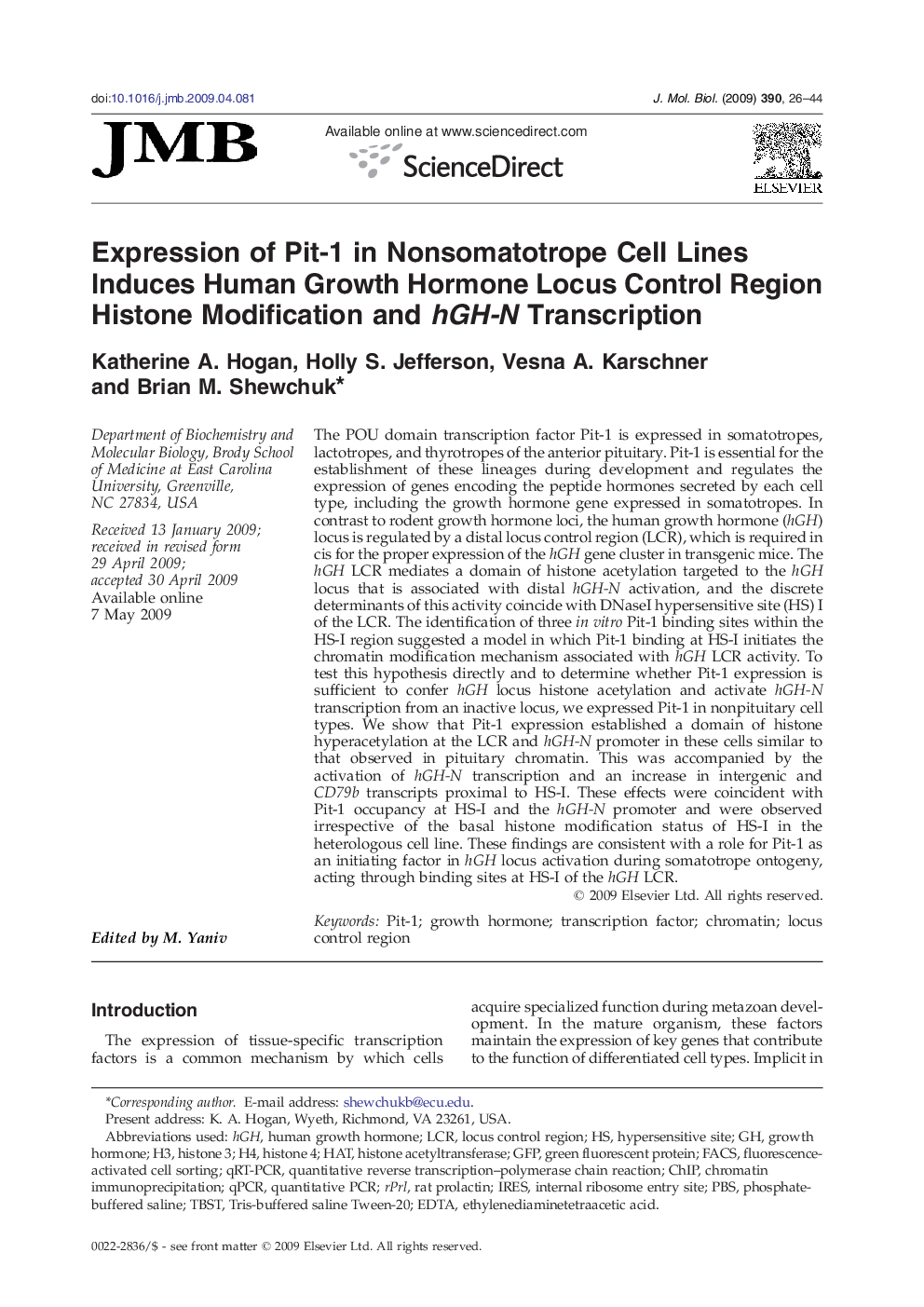| Article ID | Journal | Published Year | Pages | File Type |
|---|---|---|---|---|
| 2186627 | Journal of Molecular Biology | 2009 | 19 Pages |
The POU domain transcription factor Pit-1 is expressed in somatotropes, lactotropes, and thyrotropes of the anterior pituitary. Pit-1 is essential for the establishment of these lineages during development and regulates the expression of genes encoding the peptide hormones secreted by each cell type, including the growth hormone gene expressed in somatotropes. In contrast to rodent growth hormone loci, the human growth hormone (hGH) locus is regulated by a distal locus control region (LCR), which is required in cis for the proper expression of the hGH gene cluster in transgenic mice. The hGH LCR mediates a domain of histone acetylation targeted to the hGH locus that is associated with distal hGH-N activation, and the discrete determinants of this activity coincide with DNaseI hypersensitive site (HS) I of the LCR. The identification of three in vitro Pit-1 binding sites within the HS-I region suggested a model in which Pit-1 binding at HS-I initiates the chromatin modification mechanism associated with hGH LCR activity. To test this hypothesis directly and to determine whether Pit-1 expression is sufficient to confer hGH locus histone acetylation and activate hGH-N transcription from an inactive locus, we expressed Pit-1 in nonpituitary cell types. We show that Pit-1 expression established a domain of histone hyperacetylation at the LCR and hGH-N promoter in these cells similar to that observed in pituitary chromatin. This was accompanied by the activation of hGH-N transcription and an increase in intergenic and CD79b transcripts proximal to HS-I. These effects were coincident with Pit-1 occupancy at HS-I and the hGH-N promoter and were observed irrespective of the basal histone modification status of HS-I in the heterologous cell line. These findings are consistent with a role for Pit-1 as an initiating factor in hGH locus activation during somatotrope ontogeny, acting through binding sites at HS-I of the hGH LCR.
